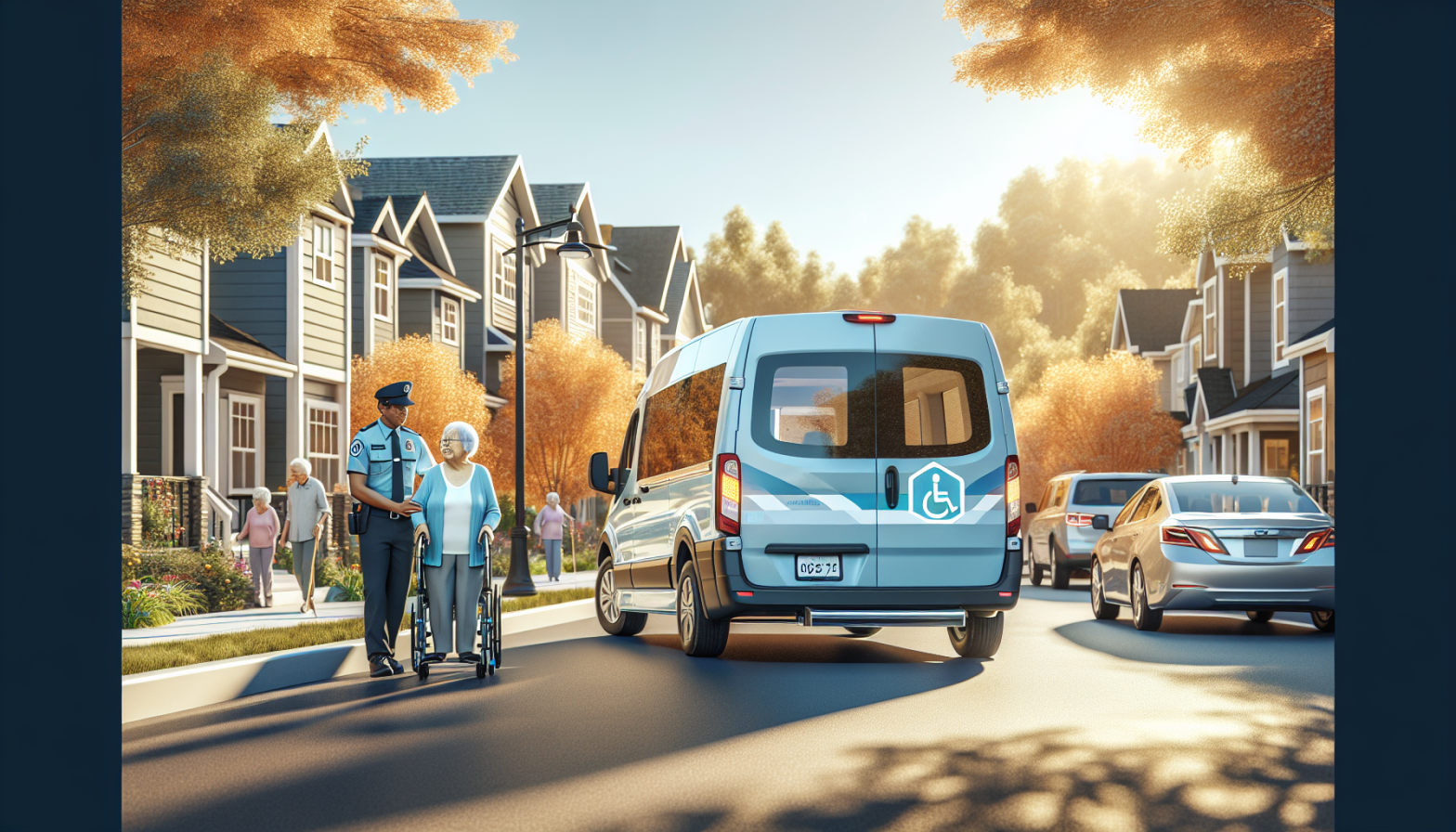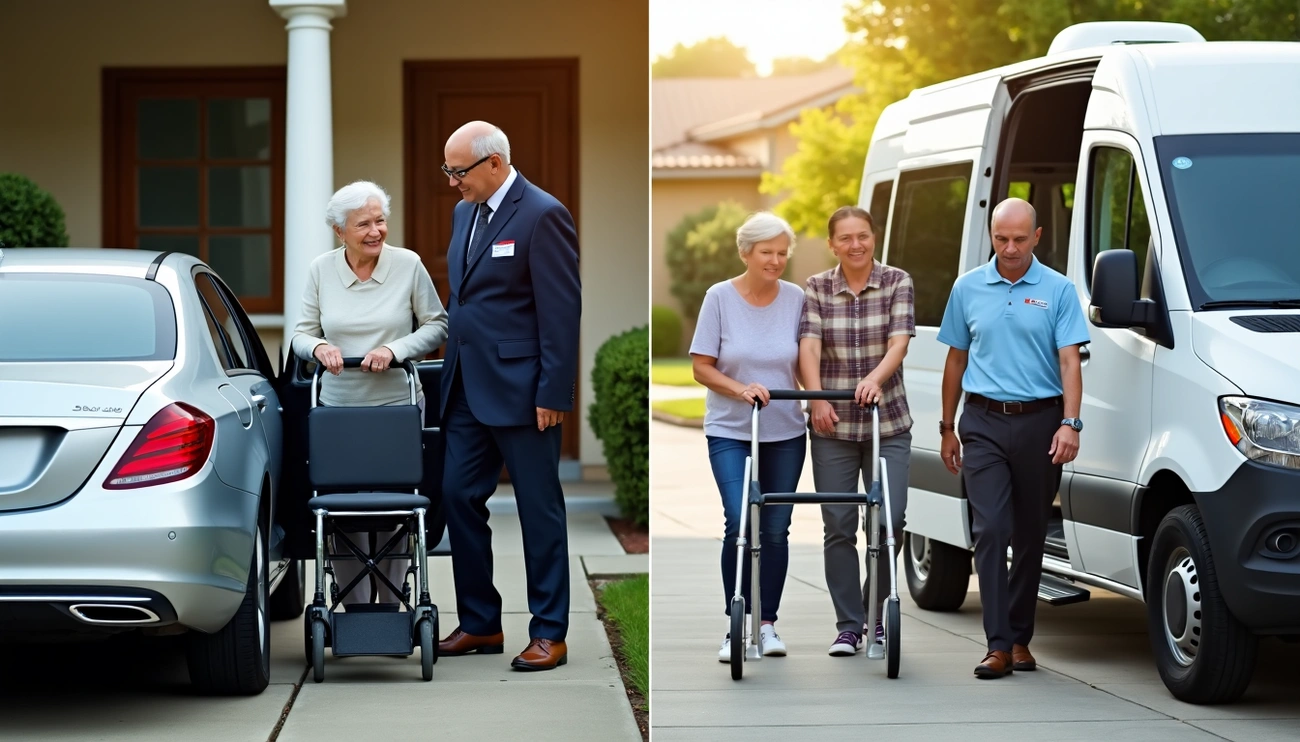As the population ages, senior services transportation becomes increasingly vital for maintaining independence and quality of life. Many older adults face challenges in accessing essential services, medical appointments, and social activities due to mobility limitations or the inability to drive. This issue has a significant impact on the well-being of seniors, making affordable and accessible transportation solutions a critical concern for families, caregivers, and communities.
To address this pressing need, various options are available to provide seniors with reliable and cost-effective transportation. From specialized elderly transportation services to non-emergency medical transportation and ADA-compliant taxi services, there are numerous alternatives to consider. This article explores these options, discusses ways to assess transportation needs, and offers insights on overcoming common barriers. By understanding these solutions, readers can make informed decisions to ensure seniors have access to the transportation they need to maintain their independence and well-being.
Assessing Your Senior Transportation Needs
To ensure seniors have access to appropriate transportation services, it’s crucial to assess their specific needs. This assessment helps in identifying the most suitable and cost-effective solutions. Here’s a guide to evaluating senior transportation requirements:
Frequency of Trips
The number of trips a senior takes per week has a significant impact on their transportation needs. Research shows that seniors make an average of 9.6 trips per week. These trips serve various purposes, including:
- Medical appointments
- Grocery shopping
- Social outings
- Religious services
It’s important to note that trip frequency can vary based on factors such as gender, age, physical function, and availability of amenities within walking distance.
Distance and Destinations
Understanding the typical distances and destinations seniors need to travel is crucial in determining the most appropriate transportation options. Consider the following:
- Short trips (within 3 miles): These may include visits to nearby stores, banks, or local community centers.
- Longer trips: These could involve medical appointments, social gatherings, or visits to family members.
- Unfamiliar areas: Seniors may need transportation to areas they’re not well-acquainted with.
Special Requirements
Many seniors have specific transportation needs due to physical limitations or health conditions. These special requirements may include:
- Wheelchair accessibility
- Assistance getting in and out of vehicles
- Special seating or safety harnesses
- Climate control for medical reasons
- Additional personnel support, such as a nurse or aide
When assessing transportation needs, it’s essential to consider these factors to ensure the chosen solutions are both practical and comfortable for seniors.
By thoroughly evaluating these aspects of senior transportation needs, families and caregivers can make informed decisions about the most suitable and affordable transportation options for their loved ones.
Cost-Effective Transportation Alternatives
Public Transit Discounts
Many cities offer discounted public transit options for seniors. In Los Angeles, for example, the Metro system provides reduced fares for individuals aged 62 and older. Seniors can benefit from discounted rates on Metro Rail lines, such as the Red and Purple lines, which offer easy access to key destinations like healthcare centers and shopping districts. Metro Busses also have routes that pass through areas with high concentrations of seniors, providing direct access to community centers and parks. Additionally, DASH Busses offer neighborhood-centric routes ideal for short, convenient trips within local communities.
Shared Ride Services
Innovative shared ride services have emerged to address the transportation needs of seniors. GoGoGrandparent is a service that connects older adults to the benefits of the gig economy, whether they have a smartphone or not. This low-cost option makes services like Uber and Lyft safer and more convenient for seniors to use. GoGoGrandparent arranges reliable rides 24/7, with pickups available within 15 minutes or scheduled in advance. They also offer additional services such as grocery and meal delivery.
Transportation Voucher Programs
Transportation voucher programs have been implemented in various counties to assist seniors and people with disabilities. For instance, the Connect Douglas Transportation Voucher Program in Douglas County, Georgia, provides eligible participants with vouchers to pay for trips from partnering private transportation providers. Seniors aged 65 and older receive USD 100.00 in vouchers per month at a cost of USD 10.00 per month. Similarly, the Cobb County Transportation Voucher Program (TVP) in Georgia assists elderly and disabled residents living outside the CobbLinc paratransit service area in paying for private transportation services.
These cost-effective alternatives provide seniors with various options to maintain their mobility and independence. By utilizing public transit discounts, shared ride services, and transportation voucher programs, older adults can access essential services and social activities without breaking the bank.
Overcoming Barriers to Senior Transportation
Mobility Issues
Mobility problems are common among older adults and can significantly impact their ability to access transportation. These issues may range from unsteadiness while walking to difficulty getting in and out of vehicles. To address these challenges, seniors can:
- Use mobility aids: Canes, walkers, or wheelchairs can help prevent falls and improve stability.
- Engage in physical activity: Regular exercise, even in small amounts, strengthens bones and muscles, improving balance and reducing the risk of falls.
- Adapt vehicles: Installing wheelchair lifts or ramps in vehicles can make transportation more accessible.
Cognitive Impairments
Cognitive impairments can make it challenging for seniors to navigate transportation systems. To overcome these barriers:
- Provide clear instructions: Offer step-by-step guidance on using transportation services.
- Use assistive technologies: GPS devices or smartphone apps can help with navigation and scheduling.
- Offer companion services: Having a caregiver or volunteer accompany seniors can provide support and reassurance.
Rural Area Challenges
Rural areas present unique transportation challenges for seniors due to limited public transit options and longer distances to essential services. To address these issues:
- Implement specialized services: Develop origin-to-destination transportation services like Riverside Connect, which prioritizes seniors and individuals with disabilities.
- Utilize voucher programs: Implement transportation voucher programs to help seniors pay for private transportation services.
- Collaborate across sectors: Increase cooperation between transportation, health, and aging sectors to develop comprehensive solutions.
By addressing these barriers, communities can help seniors maintain their independence and access essential services. It’s crucial to recognize that transportation is not just about mobility but also about maintaining social connections and overall well-being for older adults.
Conclusion
The landscape of senior transportation is evolving, with a growing focus on affordable and accessible solutions to meet the diverse needs of older adults. By assessing individual requirements, exploring cost-effective alternatives, and addressing common barriers, families and communities can ensure seniors maintain their independence and quality of life. This approach has a significant impact on the well-being of older adults, allowing them to stay connected and engaged in their communities.
Looking ahead, the continued development of innovative transportation options and the expansion of support programs will play a crucial role in addressing the mobility challenges faced by seniors. By working together to implement these solutions, we can create a more inclusive and supportive environment for older adults. This not only benefits seniors but also strengthens our communities as a whole, fostering a society that values and supports individuals at every stage of life.












